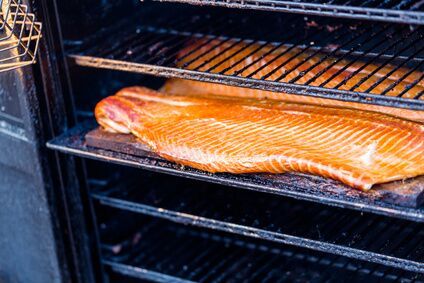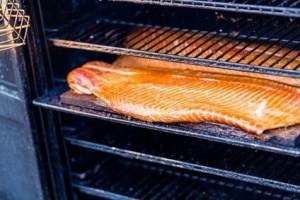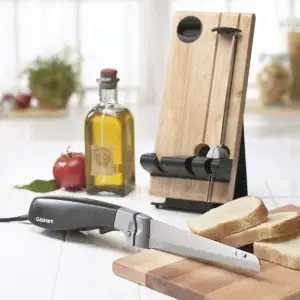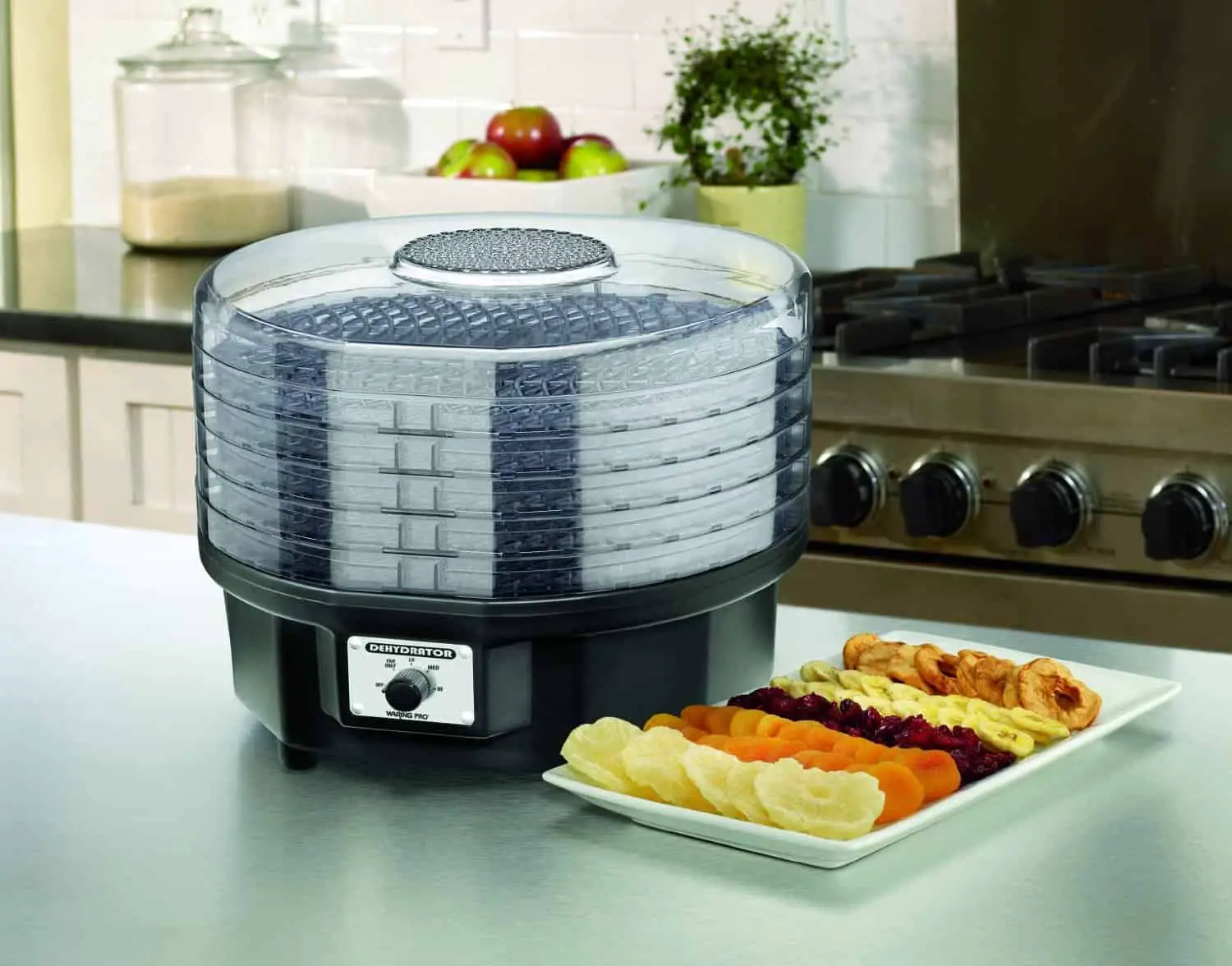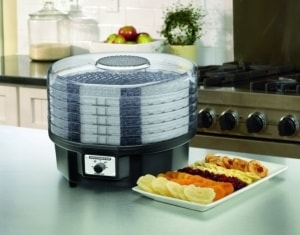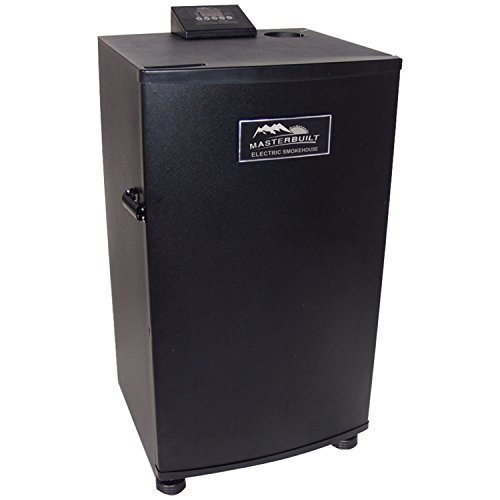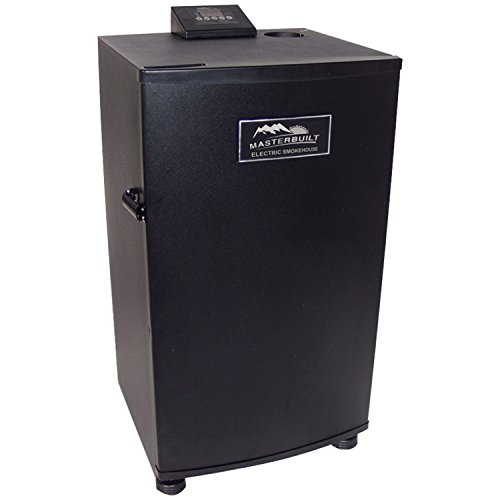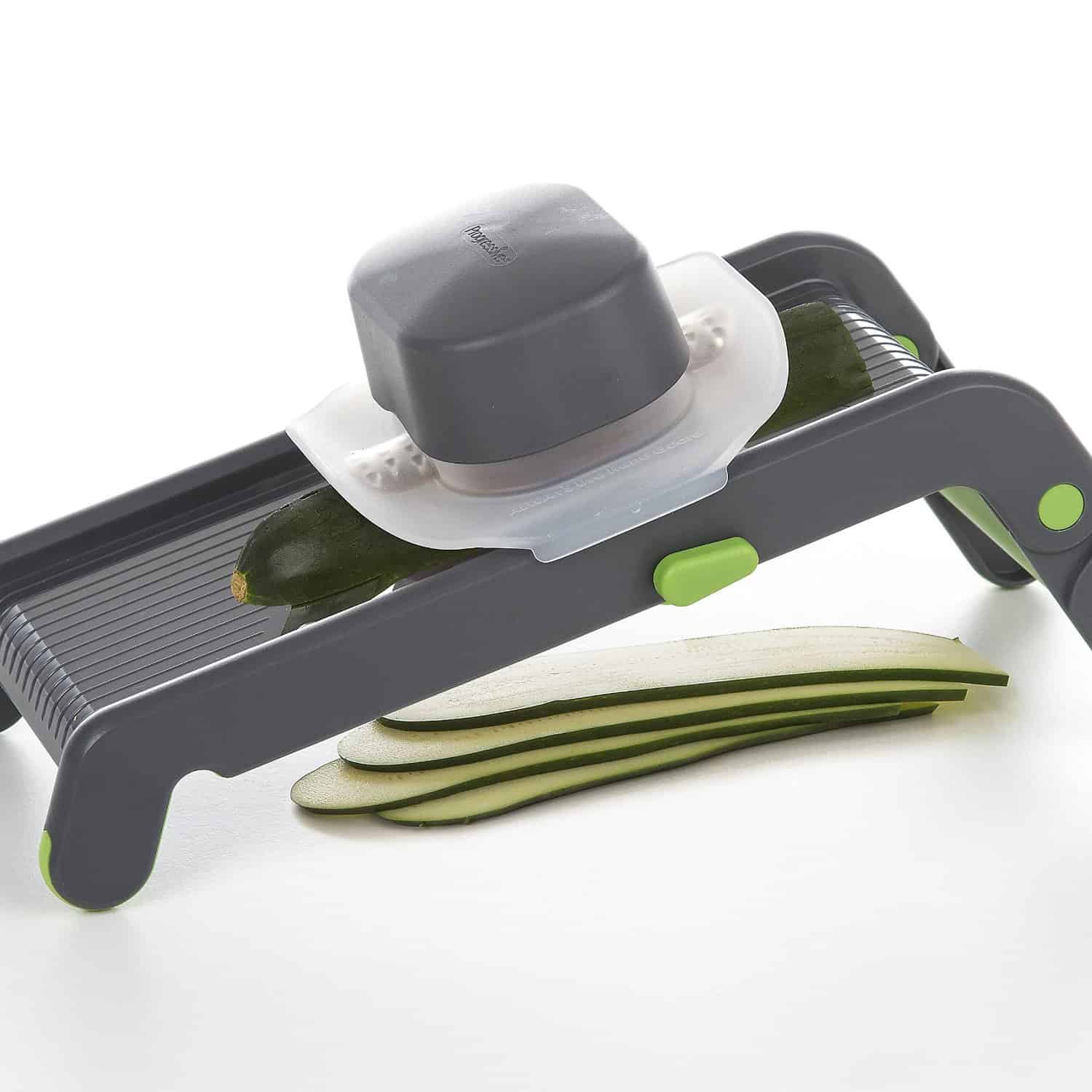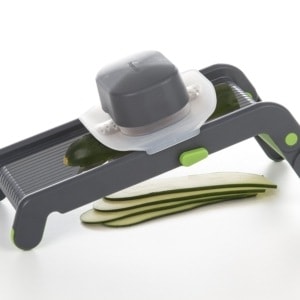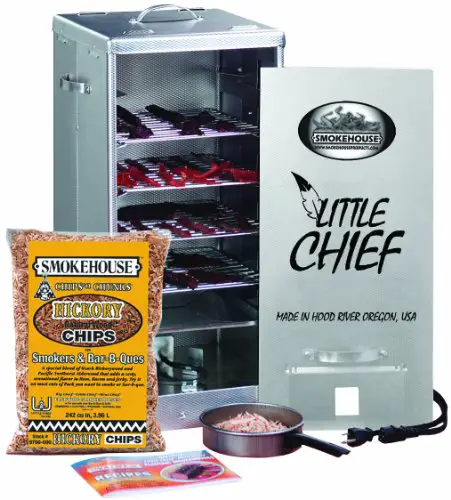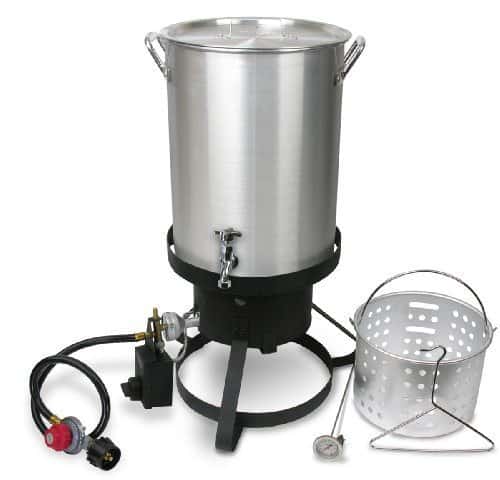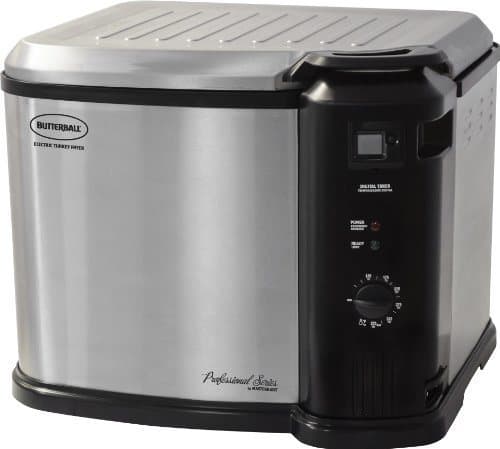As an Amazon Associate I earn from qualifying purchases.
Electric smokers can truly transform the whole experience of smoking food. They’re very practical, convenient, and easy-to-use devices that enable everyone to enjoy moist and delicious, freshly-smoked meat in their home.
Electric smokers may be easy to use, but the task of choosing the best electric smoker can be tiresome. So, with so many products available on the market today, how do you sort out the workhorses from the wimps? To help you out, we scoured the market and picked the best electric smokers in four different categories, so you can easily find one that matches your specific needs.
You can also use our practical buying guide at the end of the article to make sure you don’t forget anything important when shopping for the best electric smoker.
The Best Chart for Electric Smokers
Smoking food is one part art, one part science, and one part creativity. These are the best electric smokers that will help you put those three parts together into one flavorful package.
Best Overall: Masterbuilt 30” Electric Smoker

Pros:
The Masterbuilt 30″ Electric Smoker is a well-constructed and durable product. The cabinet is built from stainless steel material, while the interior is made from aluminum. It’s well insulated (no heat loss) and very easy to clean.
Aside from having a very high-quality construction, this model is also very practical. It comes with 4 adjustable smoking racks where you can smoke 6 chickens, 2 turkeys, 4 racks of ribs, or 4 pork butts at one time. If you’re using it for a family or friends gathering, you can smoke the food all at once.
You’ll know that this model deserves its “best overall” title when you see that it also comes equipped with some advanced features, usually found in much pricer models. This Masterbuilt model has Bluetooth Smart technology. With that fancy feature you’ll be able to control temperature, lighting, monitor meat temperature, and power your smoker on or off, all from your phone. You can sit with your family and friends, or continue with other responsibilities while monitoring the cooking process from afar.
Adding to the convenience that this model offers, you can add the wood chips without opening the door and losing heat. Masterbuilt electric smokers have a unique patented side wood chip loading system, which means you only need to add wood chips from the side, and the electric smoker will automatically load it in.
Cons:
It’s hard to find a downside to this model, but if you plan to use it indoors, you might be disappointed to know that it’s for outdoor use only. However, because it’s well insulated, you can still use it in cold weather.
Another thing we should mention is that the wood tray is very small, around 6×6 inches. Once you feed the electric smoker with wood chips, they’ll last around 30 minutes, before you have to refill it.
The Verdict:
The Masterbuilt MB20073519 30-inch model made the list of our top picks because it’s a well-rounded product with great construction, and advanced digital features, plus it’s highly practical. The fact that you can get all that for such a fair price makes this product the best electric smoker overall.
Best Quality: Masterbuilt 40” Electric Smoker

Pros:
The 40-inch Masterbuilt MB20074719 has a very durable and sturdy construction. It’s made from stainless steel and it’s well insulated. You can use it all year round without worry.
The model is extremely practical and perfect for BBQ enthusiasts who want to please their friends or family. It also comes with four chrome-coated smoking racks, but with much more cooking space. You can cook up to 16 chickens, 4 turkeys, 8 racks of ribs, or 8 pork butts.
Just like it’s smaller cousin, this device comes with Bluetooth Smart technology that allows you to monitor and control your meat and smoker temperature from your smart device or digital control panel. Plus, to make sure your meat is smoked to perfection, the product also comes with a built-in meat probe thermometer. It actually supports two, but if you want another one, you need to purchase it additionally.
The patented side wood chip loading system is another feature it shares with our best overall pick. You can easily add wood chips from the side, without opening the door and losing heat.
The 40-inch Masterbuilt MB20074719 sets itself apart from the competition with a bunch of special features that make the smoking experience even better. The MB20074719 model comes with:
- an interior light that illuminates food in low light when the door is open;
- an air damper for moisture and smoke control;
- a removable water bowl for even more moisture;
- a rear-mounted handle and wheels that make moving the smoker very easy.
Cons:
The product itself doesn’t have any major drawbacks, but some customers had expressed disappointment with the customer service when they tried to contact Masterbuilt about the product.
The Verdict:
The Masterbuilt MB20074719 40-inch smoker is your go-to product if you’re looking for the highest quality. It won’t disappoint you as it has a sturdy and durable construction, a very large cooking space, and an abundance of special features to take your smoking to the next level.
Best On Budget: Little Chief Front Load Smoker

Pros:
If you were concerned that cheaper models might not be durable, the Little Chief Front Load Smoker is here to change your mind. It has embossed aluminum construction, which also means you won’t lose any heat.
While talking about heat, the model has a consistent low-temperature setting (165 degrees Fahrenheit), so you can smoke your food slowly. This feature is particularly beneficial to beginners because it will ensure you don’t overburn or ruin your food. Plus, slow-cooking is healthier.
Another reason why the Little Chief smoker is very easy-to-use is because it comes with an instruction booklet to get you started, and there’s no assembly required.
With the Little Chief, there’s no doubt you’ll get that deep smoke flavor. It’s engineered for premium smoke ventilation, including smoke circulation and proper dehydration – two separate phases that ensure proper flavor and drying of meat.
Unlike the Masterbuilt models, which have an only 1-year limited warranty (with conditions), Little Chief comes with a 2-year warranty.
Cons:
Little Chief doesn’t have the advanced digital features that both Masterbuilt models have. Plus, you can’t control the temperature, which might be a limitation for some cooks who want to experiment.
Another drawback might be its smaller cooking space. The Little Chief can smoke up to 25 pounds of meat or fish.
The Verdict:
All things considered, Little Chief is a wonderful little electric smoker constructed from high-quality materials. It’s convenient and easy-to-use, without losing any smoking quality, although for some people it might be a little small. The low price makes it a real bargain.
Best For Professionals: Smokin-It Model #2 Electric Smoker

Pros:
The Smokin-It model #2 is an electric smoker made to last. It’s made with 18-gauge stainless steel construction, and it looks like a small safe. Plus, because of its construction, it can be used indoors. It actually comes with an NSF certification for restaurant use.
Best of all, the Smokin-It is really efficient and will save you a lot of wood chips. You only need to insert around 2 to 5 oz of wood chips at the bottom of the electric smoker where the electric heating element will slowly burn the chips by gradually releasing smoke and heat into the chamber.
Moving this large electric smoker is no problem as it comes with a long power cord and wheels on the bottom. This feature is especially beneficial for people who have limited kitchen space or need a portable electric smoker.
Although it doesn’t have fancy Bluetooth features, the Smokin-It comes with an automatic rheostat for temperature control. You can adjust the rheostat and walk away.
When it comes to warranty, the Smokin-it wins with its 3-year warranty, as opposed to the previous three recommendations.
Cons:
The only drawback to this model is that it doesn’t have digital features for remote cooking, although you can set the rheostat and walk away.
The Verdict:
When it comes to professional use, the Smokin-it is the best electric smoker for you. Unlike the other models, it can be used safely indoors. Plus, its durability, efficiency, and portability make this model the perfect option for frequent use for longer periods.
Conclusion
We chose the Masterbuilt 30 inch smoker as the best electric smoker overall. With so many options on the market it’s hard to choose just one, but we believe the Masterbuilt MB20073519 will be a good fit for most people.
It has a durable aluminum and stainless steel construction, with decent cooking space and amazing digital features for remote control. You can monitor the smoking process from your phone while you’re focusing on other things. And, although it can’t compare in some aspects with the 40-inch Masterbuilt model, its fair price gives this product amazing value for money.
The best high-quality electric smoker is the Masterbuilt 40 inch smoker. We believe it deserves this title because it has everything that the Masterbuilt 30″ has, plus a variety of digital and practical features that set it apart. If you’re willing to pay the extra money, the Masterbuilt MB20074719 will really transform your smoking experience and make it much more enjoyable.
However, if you’re on a budget, then don’t hesitate to go for the Little Chief Front Load Smoker. It’s a decent, high-quality smoker, that will give a deep smoky flavor to any meat or fish. It’s a tad smaller than the other recommendations, and it only comes with a few basic features, with no digital control, but as a beginner or an occasional smoker, you really don’t need anything else.
Finally, we chose the Smokin-It model #2 as the best electric smoker for professionals and restaurant use. It’s an NSF-certified smoker for indoor and restaurant use, so its features are focused on providing the best experience in a professional setting. It’s durable, very efficient, portable, and comes with a very long cord, so you can easily fit it in a busy kitchen.
The Advantages of Having an Electric Smoker
Electric smokers are definitely considered more of a luxury, rather than a commodity – unless you’re a professional chef or you own a restaurant. So, do you really need an electric smoker in your backyard?
To answer this question, we’ll take a look at all the advantages of having an electric smoker. Once you know how this device can help or advance your cooking practices, you’ll feel more confident in making the right buying decision.
No mess at all! When you use an electric smoker, you don’t need to go through the hassle of making a fire and go through the trouble of controlling the smoke. Simply plug in the device, set the temperature, and you’re already smoking.
Easy-to-use! Smoking meat on the grill is a lot harder, and it takes a lot of experience before one can smoke food to perfection. However, this is not the case for electric smokers. They’re beginner-friendly, but still able to perform at the level of other smokers. Set the temperature, then forget about it while the meat is being cooked. And, since you’re not dealing with charcoal or wood directly, once you’re done with smoking, simply remove the wood chip tray and throw it in the trash.
Control temperature with ease! Each electric smoker comes with an advanced temperature controlling system. You’ll only need to push a button to set the temperature you want, and the smoker will maintain it throughout the cooking process. Electric smokers also come with a thermometer placed inside the device, so you can monitor and adjust the temperature at all times.
Save time! Although most electric smokers cook the food slowly, once you’ve set up everything (which takes 2 minutes), you can focus on other things and get everything else ready before the meat is ready for serving. Plus, electric smokers come with a large cooking space, which means you can smoke all of your meat at once.
Although these are the biggest advantages of electric smokers, there are many other reasons why one would invest in an electric smoker. For example:
- Electric smokers are the safest option of all the other smoking units.
- They don’t release harmful emissions, unlike traditional charcoal smokers.
- Electric smokers function well in cold and windy areas because they’re well insulated.
- Some electric smokers can be used indoors.
It’s hard to say no to an electric smoker when you consider all the benefits they have over traditional smokers. However, depending on how frequently you smoke food and how much food you’re smoking, you can decide whether an electric smoker is the right product for you.
Tips When Smoking Food With An Electric Smoker
You might be a little insecure in using an electric smoker at first, but with these tips in mind, every meal will be smoked to perfection.
- Use an acidic marinade. Vinegar, citrus, and other acidic items prevent the formation of nitrates that can form when smoking foods, which can be harmful to one’s health. For example, lemon juice gives such a nice flavor to some smoked foods.
- Prepare the food before smoking. For example, marinating the food before smoking will keep it from drying out during the cooking process. This works because the salt in the brine makes the meat more water-absorbent.
- Keep the temperature low. Slow-cooking your smoked meats is the way to go. Overheating protein on the grill can encourage nitrates to form even if the other two steps have been properly followed.
Follow these steps to make sure all of your smoked food is cooked to perfection.
How to Choose the Best Electric Smoker?
There are many different electric smokers available on the market today, which means looking for an electric smoker that suits your needs and preferences can be a confusing and overwhelming experience when you’re. Fortunately, we’ll be sharing the most important factors to consider when looking for an electric smoker.
Construction
The construction of the electric smoker must be taken into consideration. Some electric smokers are made of cheap cast iron, which allows the smoke and heat to escape. They also need to be covered or put into the garage during cold weather because the iron might rust. To avoid this, consider investing in a ceramic, aluminum, or stainless steel smoker instead.
Aluminum and stainless steel retain heat better, can be used in cold weather, and are a lot more durable. We made sure that all of our recommendations are made of aluminum and stainless steel materials because the material also affects the durability of the product.
Size
The cooking space is one of the first things you should consider when choosing an electric smoker. For example, if you need an electric smoker to make delicious smoked meat for when your family or friends come to visit, you should be okay with a smaller smoker, like our budget pick, Little Chief. However, if you plan to feed a larger group of people, then you should consider investing in a larger smoker, like the Masterbuilt MB20074719 or Smokin-it #2.
Portability
Depending on the construction and your cooking needs, you might need to move the electric smoker from one place to another. If this is the case, choose an electric smoker that comes with wheels on the bottom so you can easily move it.
Price
Shopping for name-brand products boosts the price, but you’re getting a sturdy and durable device. Also, the size of the cooking space affects the price significantly. Think about the quantity of the food you’ll be smoking when making a decision about your acceptable price range. Many electric smokers today are priced at around $300. However, large models with many additional features can easily get to $500 and more. This is why our budget pick costs around $100, while the best smoker for professionals, the Smokin-It Model #2, costs over $500.
Before You Go
We hope that by now you found an electric smoker among our recommendations that fits your budget, needs, and preferences. However, if you’re still in doubt, feel free to visit the links above to check for current prices, in-depth specifications, as well as customer reviews.
Also, don’t forget to use our buying advice when shopping for the best electric smoker, to make sure you don’t forget anything important.
Want to see our favorite electric smokers one more time before you go? Here they are!

